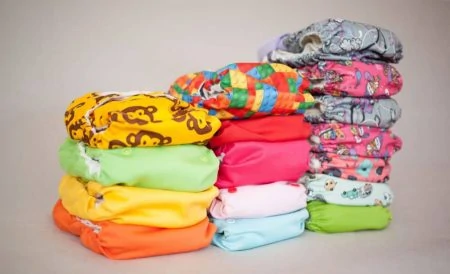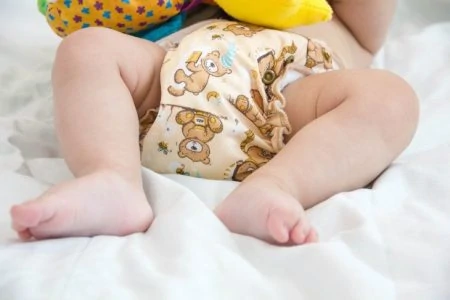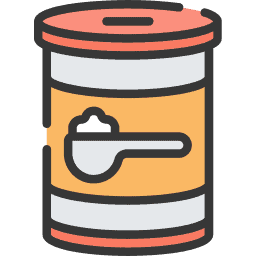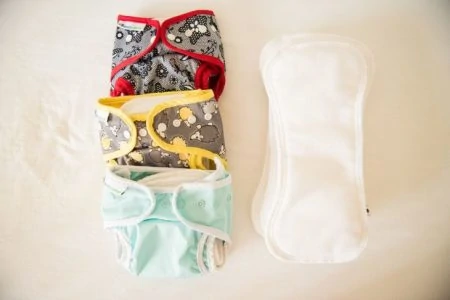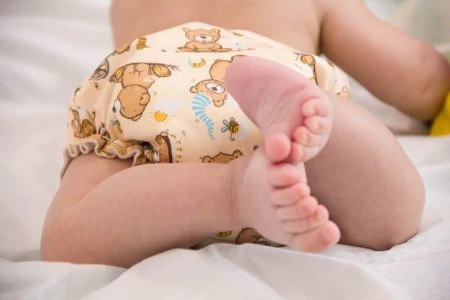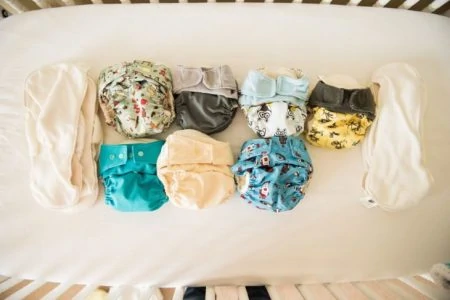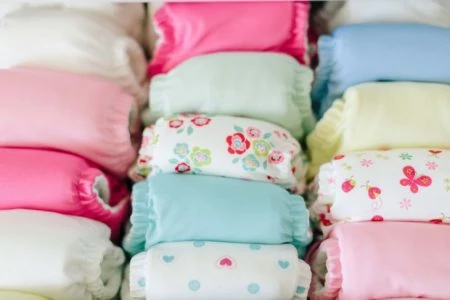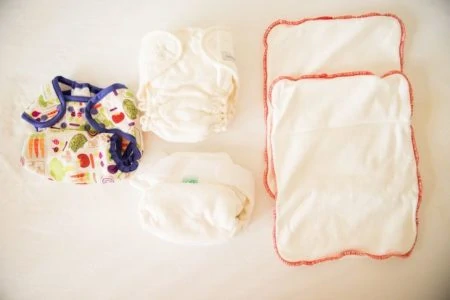You have a stack of adorable cloth diapers, but you can’t put them on the baby just yet. Unlike disposables, cloth diapers need a little “boot camp” before they are ready for duty.
This process is called prepping. It removes manufacturing residues and fluffs up the fibers for maximum absorbency. It sounds technical, but it is basically just washing them. We have prepped hundreds of diapers, so we know exactly how to get your stash ready for the changing table.
Here is your step-by-step guide to prepping cloth diapers so you can start diapering with confidence.
Key Takeaways
- Prepping removes natural oils and factory dirt to prevent leaks.
- Synthetics (microfiber, polyester) usually only need one hot wash and dry.
- Natural fibers (cotton, hemp) need multiple hot cycles to reach full absorbency.
- Used diapers require a bleach soak to sanitize them before the first use.
Why Prep Your Cloth Diapers?
You might wonder if this step is actually necessary. Can’t you just wash them once and go? The answer is a resounding yes, you really do need to prep them.
Think of new cloth diapers like high-quality bath towels. When they are brand new, they are often stiff and don’t absorb water very well. Natural fibers hold onto natural plant oils that repel liquid. If you put an unprepped diaper on your baby, the pee will likely roll right off the fabric and leak out the leg holes.
Even synthetic fibers need love. While they don’t have natural oils, they collect dust and grime during manufacturing and shipping. Prepping washes away that dirt and opens up the fibers so they are ready to soak up moisture immediately.
Natural vs. Synthetic Fibers
Once you have your stash of diapers, you need to sort them. Some parents throw everything in the wash together, while others separate them religiously. This is actually a hot topic in the cloth diaper community.
The “separators” believe that if you wash natural fibers (cotton, hemp) with synthetics (microfiber, fleece), the natural oils will transfer onto the synthetics. If that happens, the synthetic diapers might start repelling liquid.
The “mixers” believe that modern detergents are strong enough to suspend those oils in the water and flush them away, keeping the other diapers safe.
What You Need To Know
How to Prep Cloth Diapers
Ready to get washing? The process depends entirely on the fabric type. Check your tags and follow these steps.
1. Synthetic Diapers
Synthetic diapers include microfiber, microfleece, polyester, and microsuede. These are the easiest to prep because the fibers are already relatively open. You just need to clean them.
Instructions:
- Wash the diapers once on a hot cycle.
- Use the recommended amount of cloth-diaper-safe detergent.
- Dry in the dryer or line dry.
That is it! After one wash, they are ready for your baby.
2. Natural Diapers
Natural fiber diapers (cotton, hemp, bamboo blends) are higher maintenance. They contain natural plant oils that must be completely stripped away to make the fabric absorbent.
Instructions:
- Wash the diapers in hot water with detergent.
- Dry them in the dryer (drying helps shrink and fluff the fibers, which increases absorbency).
- Repeat this process 3 to 5 times.
Here's What I Do
Note that natural fibers will continue to gain absorbency over the first 10 washes. You can start using them after 3 washes, but you might need to change the baby more frequently until they reach their peak performance.
Special Circumstances
Not every diaper fits perfectly into the “cotton” or “microfiber” box. Here is how to handle the outliers.
1. Bamboo
Bamboo is tricky. Technically, the bamboo used in textiles is rayon, which is a semi-synthetic fiber. Most of the natural oils are removed during processing.
Most parents treat bamboo like a synthetic: wash once and go. However, some thicker bamboo blends benefit from 2 or 3 cycles to really fluff up. When in doubt, wash it twice before use.
2. Charcoal Bamboo
Charcoal diapers are typically bamboo rayon with charcoal nanoparticles. You can prep these like synthetics.
However, watch out for the dye. Some charcoal inserts contain dark dyes that can bleed during the first wash. It is smart to wash these by themselves for the first cycle so you don’t turn your white cotton prefolds gray. If you do get some color transfer, don’t panic; it won’t affect performance and usually fades over time.
3. Diaper Covers
Waterproof covers (usually made of PUL or TPU) do not need absorbency prepping because they aren’t supposed to absorb anything.
Wash them once with detergent to clean them, and they are good to go. While you can tumble dry them on low, we recommend air drying your covers. High heat can damage the waterproofing over time.
4. Pre-Loved Diapers
Buying used is a great way to save money, but you must sanitize them. You don’t know if the previous owner had issues with yeast, bacteria, or hard water buildup.
You need to perform a bleach soak. This resets the diapers and ensures they are safe for your baby’s skin.
How to bleach soak:
Fill your bathtub or top-load washing machine with cold water. Add regular disinfecting bleach (check the bottle to ensure it kills 99.9% of germs) using these ratios:
Bathtub:
- Half Full: ½ cup of bleach.
- Three-Quarters Full: ¾ cup of bleach.
Top-Load Machine:
- Small Load: ⅓ cup of bleach.
- Medium Load: ½ cup of bleach.
- Large Load: ¾ cup of bleach.
Soak the clean diapers for 30 minutes. Rinse them thoroughly with hot water, then run them through a regular hot wash cycle with detergent.
If the diapers still smell funky or aren’t absorbing after the bleach soak, you may need to strip the diapers to remove mineral buildup.
FAQs
In Conclusion
Prepping is the final hurdle between you and your cloth diapering journey. It might seem like a lot of laundry upfront, but it pays off with absorbent, leak-free diapers.Take the time to identify your fabric types and treat them accordingly. Once that first prep is done, you never have to do it again for those diapers. You have got this, mama!
